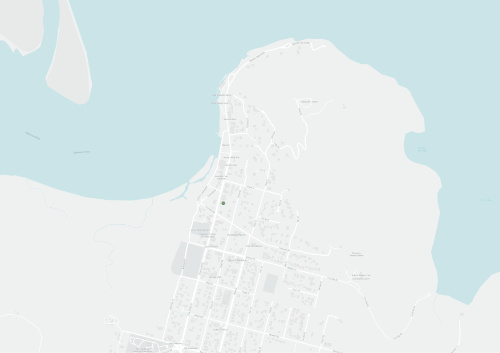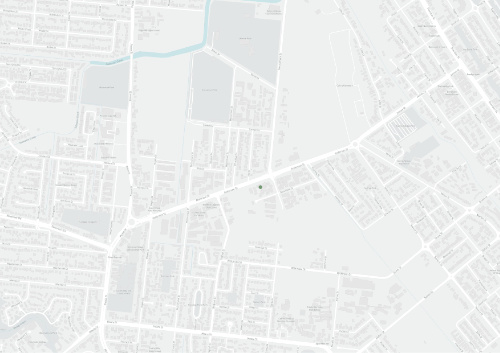Plan Explorer
Filter by:
Region
Topic
Sector
Other
Results
Great Barrier Reef report card 2012 and 2013
Current InformationalThe Great Barrier Reef report card is part of the Reef Quality Water Protection Plan and measures the progress from 2009 to 2013 regarding the Reef Water Quality Protection plan 2009 targets.
Reef Water Quality Protection Plan 2009
Superceded StrategicThe intention of the Reef Water Quality Protection Plan 2009 was to ensure that the water quality of the Great Barrier Reef Lagoon was improved by addressing non-point source pollution caused by large-scale land use along the eastern coastline.
Cape York Peninsula Land Use Strategy: Land Use Program: Aspects of Commercial and Non-Commercial Fisheries of Cape York Peninsula
CYPLUSCYPLUS commissioned WBM Oceanics Australia to prepare this report which describes the level of use of commerical and non-commerical fisheries, factors affecing the environmental condition of said fisheries and habitats, and management issues relating to each of the fisheries and habitats in 1994.
Draft Cape York Peninsula Natural Resource Management Plan (2005)
Obsolete Government PolicyThe aim of the Plan is to ensure that natural resources are well managed, and protected where required, for the benefit of us all and future generations. The Plan aims as far as possible to be consistent with other regional strategies.
Kaanju Homelands Wenlock & Pascoe Rivers Cape York Peninsula Indigenous Protected Area Management Plan
Obsolete OperationalPrimarily, this Plan is for Kaanju people living on homelands, but it also serves as a guide for external land and resource management, conservation, service delivery, economic development and community development organisations and agencies, both government and non-government, engaged with Chuul
Kuuku I’yu Northern Kaanju Ngaachi Cultural Heritage Management Plan
Current OperationalThis document outlines the cultural heritage management plan for the Kuuku I’yu Northern Kaanju Ngaachi for the next six years from 2011 to 2017.
Cape York Peninsula Regional Biosecurity Strategy
Current StrategicCape York Natural Resource Management (Cape York NRM), Cook Shire Council (CSC), Weipa Town Authority, Wujal Wujal, Hopevale, Lockhart, Mapoon, Napranum, Aurukun, Pormpuraaw and Kowanyama Aboriginal Shire Councils and the Northern Peninsula Area Regional Council (NPARC) have collaboratively devel
Western Cape Communities Trust investment strategy 2011-2022
This investment strategy released in 2011 presents an in-depth explanation of the funding allocation for the Western Cape Communities Trust, established by the Western Cape Communities Co-existence Agreement for a number of purposes such as natural resource management and funding allocation.
Western Cape Chamber of Commerce strategic plan 2010-2012
Obsolete CommunityThis strategic plan was developed following a review of the 2007 Western Chamber of Commerce Strategic Plan during a workshop in Weipa on the 20th of November 2009.
Western Cape Communities Trust & Western Cape Communities Coordinating Committee strategic plan 2009-2012
Obsolete StrategicThis document was released by the Western Cape Communities Trust (WCCT) and Western Cape Communities Coordinating Committee (WCCCC) as a plan to deliver on 4 key objectives within the mining lease area surrounding Weipa.
Mitchell River Watershed Management Group operation plan
Superceded OperationalThe Mitchell River Watershed Management Group released this operational plan as a follow up from the business plan to take tasks identified therein and prioritise them, identify potential partners for projects, and setting measurable outcomes and appropriate times for completion of projects.
Laura Rangers weed and fire plan
Current CommunityThis poster outlines the objectives, location, strategy, planned outcomes, and implementation of the Laura Ranger's Weed Management Strategy.
Mitchell River Watershed Management Group business plan
Current OperationalThis document was a strategic plan released in late 2012 that intended to guide the Mitchell River Management Group on the priorities of the organisations stakeholders, defining a set of projects and activities for implementation, documenting the areas which funding might come from, and defi
Mitchell River Watershed Strategic Plan
Current StrategicThe Mitchell River Watershed Strategic Plan 2013-2016 is an update of the Mitchell River Watershed Management Plan created in 2000.
Mungumby Community Plan
Current CommunityThis document was released in March of 2012 following a 2007 Federal Court ruling which recognised the Eastern Kuku Yalanji people's of 129,600ha of country between the South Mossman River and just North of Black Mountain near Cooktown.
Wujal Wujal Aboriginal Shire Council planning scheme
Current CommunityThe Wujal Wujal planning scheme was released in 2013 by the Wujal Wujal Aboriginal Shire Council and set out the council's intention for the future of Wujal Wujal over the next 20 years from 2013.
Plan for the recovery of the southern cassowary
Current Threatened speciesThe southern cassowary (Casuarius casuarius johnsonii) occurs primarily in rainforest habitats but can also be found in woodlands, swamps, and disturbed vegetation forraging for fruits throughout the Wet Tropics.
Annan and Endeavour Strategic Plan
Current StrategicThe Annan-Endeavour Catchment Management Group has developed this Strategy in close association with all interested community, government and industry groups.
Brumby Hollow Property Pest Management Plan
Obsolete OperationalThis plan outlines the sustainable land management practices for Brumby Hollow over 4 years. Objectives are:
Bunata Property Pest Management Plan
Obsolete OperationalThis plan aims to protect the economy and environment of Bunata from the adverse impacts of weeds and feral animals.The objectives for weed and feral animal management in Bunata over the next 4 years are:
Jim's Joint Property Pest Management Plan
Obsolete OperationalThe plan has been prepared to protect the economy and environment of “Jim’s Joint” from the adverse impacts of weeds and feral animals.
Hopevale community plan 2012
Current CommunityThe intent of the community plan is that it will represent the community’s views, visions and values for the future of the local government area, and set a strategic vision for what the community wants the area to be like in 10, 20 or more years.
Recently added
Western Cape York Water Quality Improvement Plan
StrategicOne of the major impediments facing Cape York is the myth that it is a vast undisturbed wilderness sitting in a time-warp that has by-passed the rest of Australia.
Cape York Peninsula Regional Biosecurity Strategy
Current StrategicCape York Natural Resource Management (Cape York NRM), Cook Shire Council (CSC), Weipa Town Authority, Wujal Wujal, Hopevale, Lockhart, Mapoon, Napranum, Aurukun, Pormpuraaw and Kowanyama Aboriginal Shire Councils and the Northern Peninsula Area Regional Council (NPARC) have collaboratively devel
Hopevale Aboriginal Shire council planning scheme
Current StrategicHope Vale is a community for families that celebrates Aboriginal culture, striving to be sustainable, viable, fair and equitable, accommodating change, fostering growth, promoting success in a friendly and culturally sensitive environment and is an enjoyable place to live.
Hopevale Economic Strategy 2014-2017
Current StrategicHope Vale Aboriginal Shire Council (HVASC) is focussing on a Community Economic Development (CED) model; where communities initiate their own solutions to local problems.
Hopevale community plan 2012
Current CommunityThe intent of the community plan is that it will represent the community’s views, visions and values for the future of the local government area, and set a strategic vision for what the community wants the area to be like in 10, 20 or more years.
Eastern Kuku Yalanji Indigenous Protected Area Management Plan Stage 1
Current OperationalCaring for Kuku Nyungkal Country
Our vision for our bubu (land)1 is to
Maintain our Nyungkal culture, belief, customs and law/lore;
Eastern Kuku Yalanji Indigenous Protected Area Management Plan Stage 2
Current CommunityJalunji-Warra Land and Sea Country
(excerpt)
Wunta Draft Strategic Plan
Current StrategicWe are proud and culturally strong community organisation.
Wunta Traditional Fire Management Plan Stage 1
Current OperationalThis document is to support the re-introduction of an indigenous practical fire management action plan to the Nesbit river area in Cape York Peninsula. The project is a stage one plan that will develop over time with further stages and to encompass more fire managed land in the area.
Vegetation Management Act 1999
Current Statutory (law)The purpose of this Act is to regulate the clearing of vegetation in a way that:

